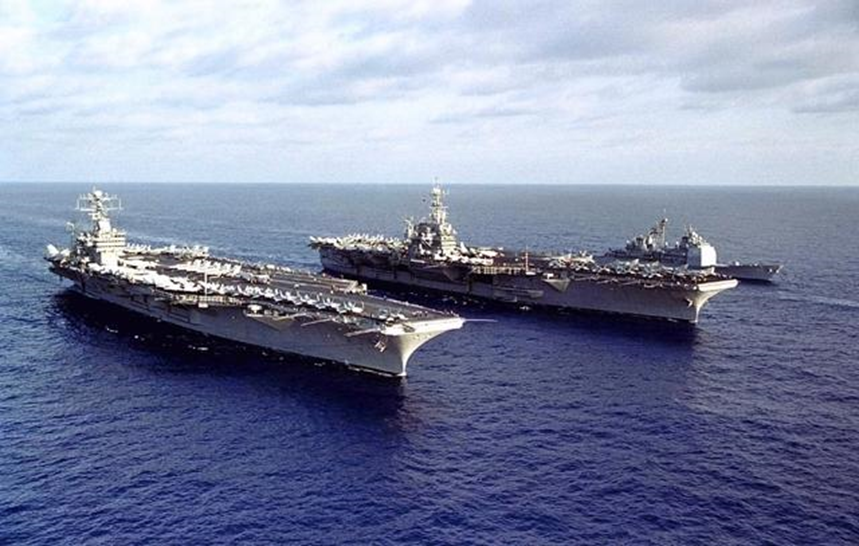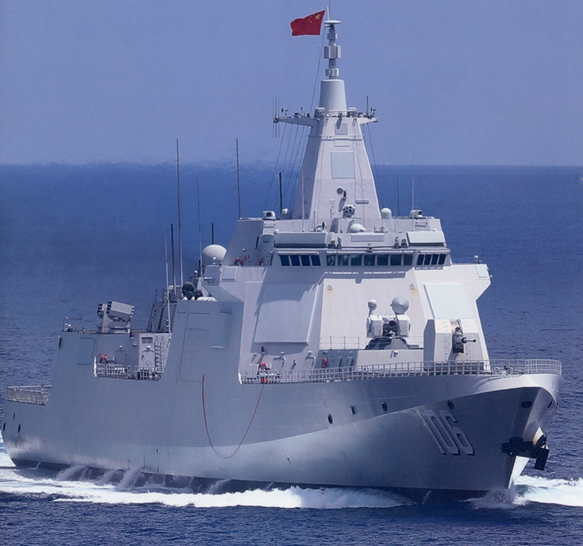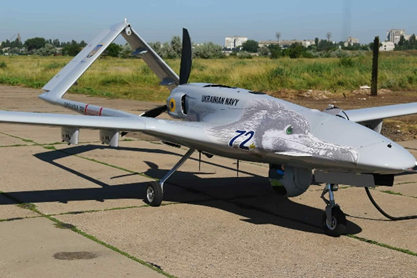🧵A Thread on the US’ AIM-174B and China’s YJ-12 Carrier Killer Cruise Missile: A Dance of the Vampires with Chinese Characteristics. 1/17 

In light of recent events with the unveiling of the US’s new AIM-174B, let’s discuss the threat it’s mostly meant to counter, the YJ-12. 2/17 

In 1995-1996, the US’s display of power during the Third Taiwan Strait Crisis, sending both the USS Independence and USS Nimitz carriers, profoundly shocked the PRC’s leadership. This strengthened the Chinese ambition to develop weapons powerful enough to threaten US CSGs. 3/17 

Requirements were drafted for a supersonic missile that would take on US carriers and their escorts. It would complement the medium range sea skimming subsonic YJ-83, not be survivable enough on its own to break through the Aegis Combat System. 4/17
https://x.com/VLS_Appreciator/status/1808180137298415918
China most likely relied on the Russian supersonic SS-N-22 Sunburn, in use aboard their Sovremenny destroyers, to inform their design decisions. Both uses the same ramjet propulsion system, fed by 4 flank air intake and a double set of control surfaces in an X layout. 5/17 

The ramjet uses an integral rocket booster, the ramjet chamber is used to host fuel boosting the missile to speeds allowing ramjet operations accelerating up to its more efficient speeds of Mach 3 to 4. At these speeds its gives ~30s reaction times past the radar horizon. 6/17 

The missile is guided by an Inertial Navigation System with mid-course corrections via Beidou satellite link, and is fitted with an active radar in its nose cone for terminal guidance. Violent high Gs terminal maneuvers are used to increase terminal survivability. 7/17 

With a capable ISR network this satellite link could allow China to target missiles beyond the radar range of the firing platform to make full use of the missile long range and high speed, similarly to the US’s Collaborative Engagement Capability (CEC). 8/17 

The fully supersonic flight profile of the YJ-12 complements the PRC’s missile arsenal with the fully subsonic YJ-83 and the mostly subsonic but supersonic in final phase YJ-18, range wise it also fits in between the YJ-83’s ~180 and the the YJ-18’s ~400 ish km. 9/17 

The most strategically important version is the classic YJ-12 air launched from the JH-7A but mostly from the H-6J, extending its range up to 1900km including the bomber’s ferry and its 400+km range when fired at altitude. 10/17 

The bomber’s long range and high flexibility combined with the missile’s relatively low flying flight profile at high speeds creates tactical challenges for US planners compared to the faster but more predictable and less flexible ballistic missiles. 11/17 

Shooting down the archers before they fire their arrows is the best counter to these attacks. The recent sighting of operational AIM-174Bs aboard the USS Carl Vinson is a sign that the Navy is returning to these Cold War tactics. @heatloss1986 12/17
https://x.com/heatloss1986/status/1809388568433029234
The AIM-174Brs long range, important payload and high definition radar makes it the ideal long-range bomber killer, likely lacking the end game kinematics it would need to go after more nimble fighters. A worthy (and superior) heir to the AIM-54 Phoenix. 13/17 

In addition, the YJ-12A can be launched from naval surface units via deck canisters, but the PLA rarely uses it as it is 3x heavier than the standard YJ-83 and is not used in VLS unlike the YJ-18. The DDG-167 Shenzhen notably carries 16. 14/17 

Alongside the air-launched version, the other main use of the missile is in the Coastal Defense Missile force (CDMF). Here the road mobile YJ-12B gradually replaces the YJ-62 since 2018. Being ground launched its range is slightly reduced to ~300km. 15/17 

Mainland batteries enforce the PRC’s control of its shores and can threaten the Taiwanese navy but are too far to be of any relevant use against the US, whereas the units deployed in the South China Sea pose a tactical challenge in the region. 16/17 

The YJ-12 fits perfectly within the PRC’s anti-ship missile arsenal, and alongside with the H-6J it is giving the US the challenge of a Dance of the Vampires with Chinese characteristics, however as recent event have showed never count the US out of the race. 17/17 

Sources:
airuniversity.af.edu/Portals/10/CAS…
cimsec.org/fighting-dmo-p…
missiledefenseadvocacy.org/missile-threat…
airuniversity.af.edu/Portals/10/CAS…
airuniversity.af.edu/Portals/10/CAS…
cimsec.org/fighting-dmo-p…
missiledefenseadvocacy.org/missile-threat…
airuniversity.af.edu/Portals/10/CAS…
The cool kids list @Defence_IDA @John_A_Ridge @Doha104p3 @the_engi_nerd @VLO225 @MassiasThanos @StrategicTrends @AirPowerNEW1 @TheKimulation @kemal_115 @GrangerE04117 @stoa1984
Also i don’t get why this table from CIMSEC lists the YJ-12 as partially supersonic in the terminal phase. It has a ramjet it literally has to be supersonic for most of the flight ???
@TheKimulation The twitter interactions I yearn for, the more you know
• • •
Missing some Tweet in this thread? You can try to
force a refresh





















